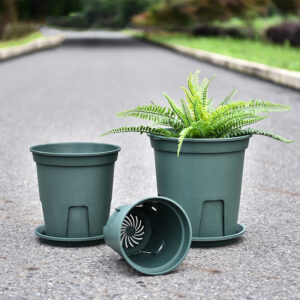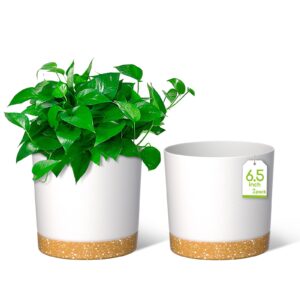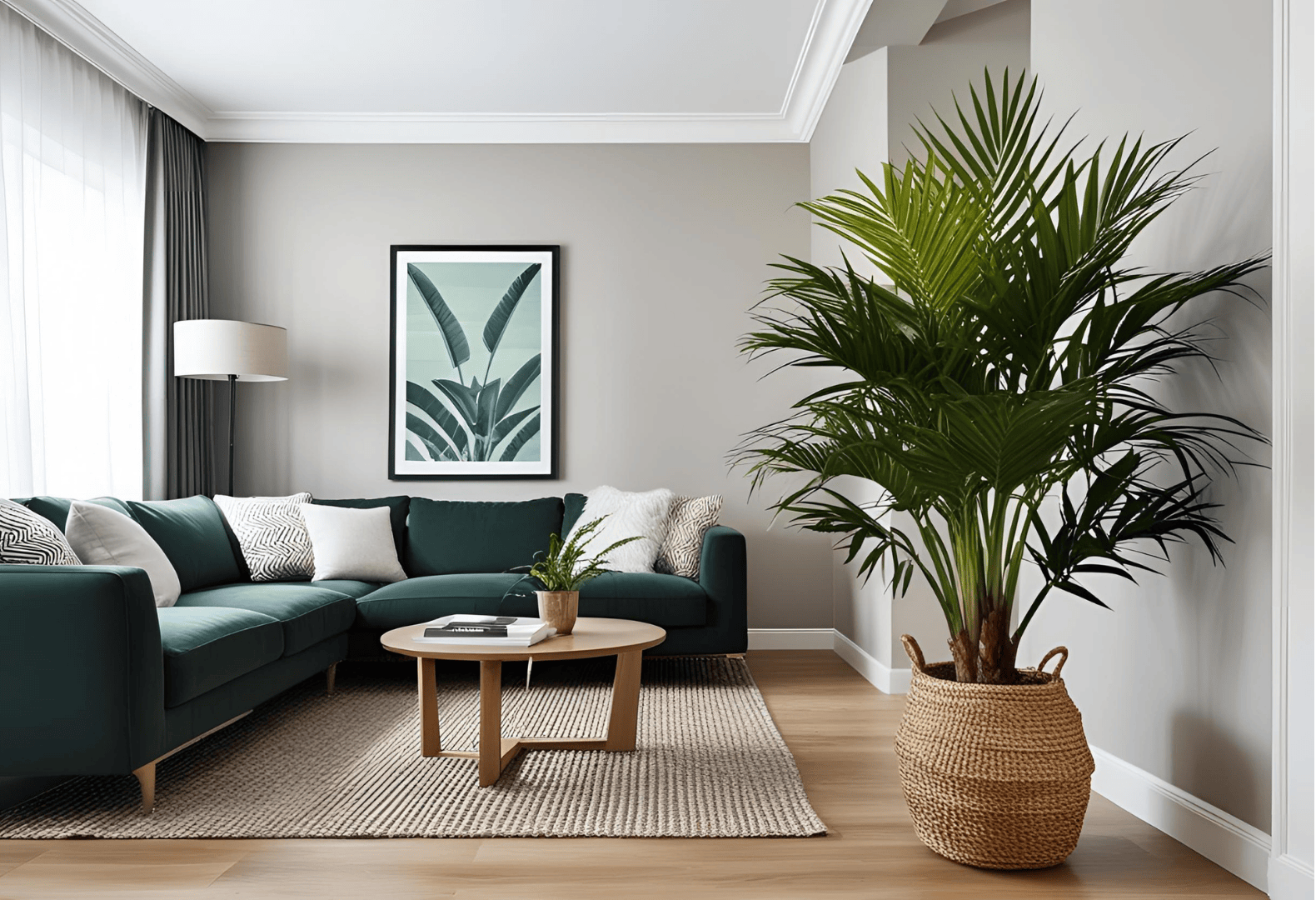Introduction to Peace Lily: A Stylish and Easy Care Plant
When it comes to adding beauty and tranquility to your home, few plants rival the elegance of the Peace Lily (Spathiphyllum). Known for its striking white flowers and glossy, dark green leaves, the Peace Lily is an excellent addition to any room. Not only is it low-maintenance, but it also purifies the air, making it an ideal choice for indoor spaces. Whether you’re a seasoned plant enthusiast or a beginner, this guide will show you how to grow Peace Lily at home and incorporate it into your home design effortlessly.

The Perfect Environment for Growing Peace Lily
1. Light and Placement
The Peace Lily is an adaptable plant that can thrive in various lighting conditions. However, it prefers indirect light. Direct sunlight can scorch its leaves, leaving brown spots or causing the plant to wilt. Therefore, placing your Peace Lily near a north or east-facing window is ideal. If you don’t have access to natural light, it can also tolerate low light, making it a great plant for rooms that don’t receive much sunshine.
2. Temperature and Humidity
Peace Lilies thrive in warm, humid conditions. They are native to tropical regions, so maintaining a consistent temperature between 65°F to 80°F (18°C to 27°C) is essential. As for humidity, Peace Lilies enjoy a moist environment. To boost humidity, you can mist the leaves with water or place a humidity tray (filled with pebbles and water) beneath the plant. If you’re concerned about the dry air during winter, using a humidifier will keep your Peace Lily happy and healthy.
3. Watering Your Peace Lily
Peace Lilies like their soil to remain consistently moist but not soggy. The key is to water them thoroughly but allow the excess water to drain away. It’s best to let the top inch of soil dry out before watering again. Overwatering can lead to root rot, so make sure your pot has proper drainage. Additionally, using filtered or distilled water can prevent mineral buildup, which could harm the plant over time.
-
All Products
Drainage Pot for Plants – Plastic Root Control Planter with Tray for Indoor & Outdoor Use
£19.99 – £81.08 Select options This product has multiple variants. The options may be chosen on the product page -
All Products
Ceramic Flowerpot, Nordic Style – Breathable, Durable & Handmade Plant Pot (Multiple Sizes, Without Disc)
£28.99 – £49.99 Select options This product has multiple variants. The options may be chosen on the product page
How to Care for Peace Lily: Fertilizing and Pruning
1. Fertilization
During the growing season (spring and summer), feed your Peace Lily with a balanced, water-soluble fertilizer once a month. In fall and winter, when the plant is in its dormant phase, you can reduce feeding. Over-fertilizing can result in leggy growth and fewer flowers, so use fertilizer sparingly.
2. Pruning for Health and Aesthetics
Regular pruning helps maintain the shape of your Peace Lily while also ensuring it remains healthy. Remove dead or yellowing leaves and spent flowers regularly. This will encourage new growth and improve the plant’s overall appearance. You can also trim any leggy stems to promote a bushier, fuller look.
-
All Products
Stainless Steel Pruning Shears – Multifunctional Elbow Design for Efficient Branch Cutting
£19.99 – £29.99 Select options This product has multiple variants. The options may be chosen on the product page -
All Products
Pruning Shears – Branch Cutting Tools for Gardening, Household & Fruit Tree Maintenance
£31.99 – £35.99 Select options This product has multiple variants. The options may be chosen on the product page -
All Products
Pruning Shears for Gardening – Heavy-Duty Manganese Steel Branch Cutter with Safety Lock
£22.99 Select options This product has multiple variants. The options may be chosen on the product page
Common Issues with Peace Lily: Troubleshooting Tips
Despite being easy to care for, Peace Lilies can sometimes face a few issues. Here are some common problems and how to solve them:
- Yellowing Leaves: If the leaves turn yellow, it could be a sign of overwatering, poor drainage, or low humidity. Check the moisture level of the soil and adjust your watering routine accordingly. Additionally, increase humidity around the plant.
- Brown Tips: Brown tips on the leaves may indicate a lack of humidity or underwatering. Regular misting or using a humidity tray can help fix this issue.
- No Flowers: Peace Lilies may stop flowering if they are not getting enough light or if they are over-fertilized. Ensure your plant is in a location with indirect sunlight and avoid excessive use of fertilizers.
Peace Lily Home Design: Incorporating Peace Lilies Into Your Home Décor
Now that you know how to grow Peace Lily at home, it’s time to focus on how to use this stunning plant to enhance your home design. Whether you’re decorating a modern apartment, a cozy living room, or a minimalist space, Peace Lilies fit into virtually any style.
1. Peace Lily as a Focal Point
Place your Peace Lily in a decorative planter and position it in a place of prominence in your living room, hallway, or office. A Peace Lily can make an excellent statement piece, especially when paired with other plants or flowers. Consider using a tall, elegant pot to complement the plant’s graceful leaves and flowers. A decorative stand or table can also elevate the plant, making it the focal point of the room.

2. Peace Lilies in Bedroom Design
The Peace Lily’s soothing appearance makes it an ideal plant for the bedroom. Not only will it enhance the aesthetic of the room, but it can also improve the air quality, ensuring a peaceful, restful sleep. Place it near your bed or on a bedside table to add tranquility to your space. Its ability to thrive in low light conditions also makes it perfect for bedrooms that lack direct sunlight.
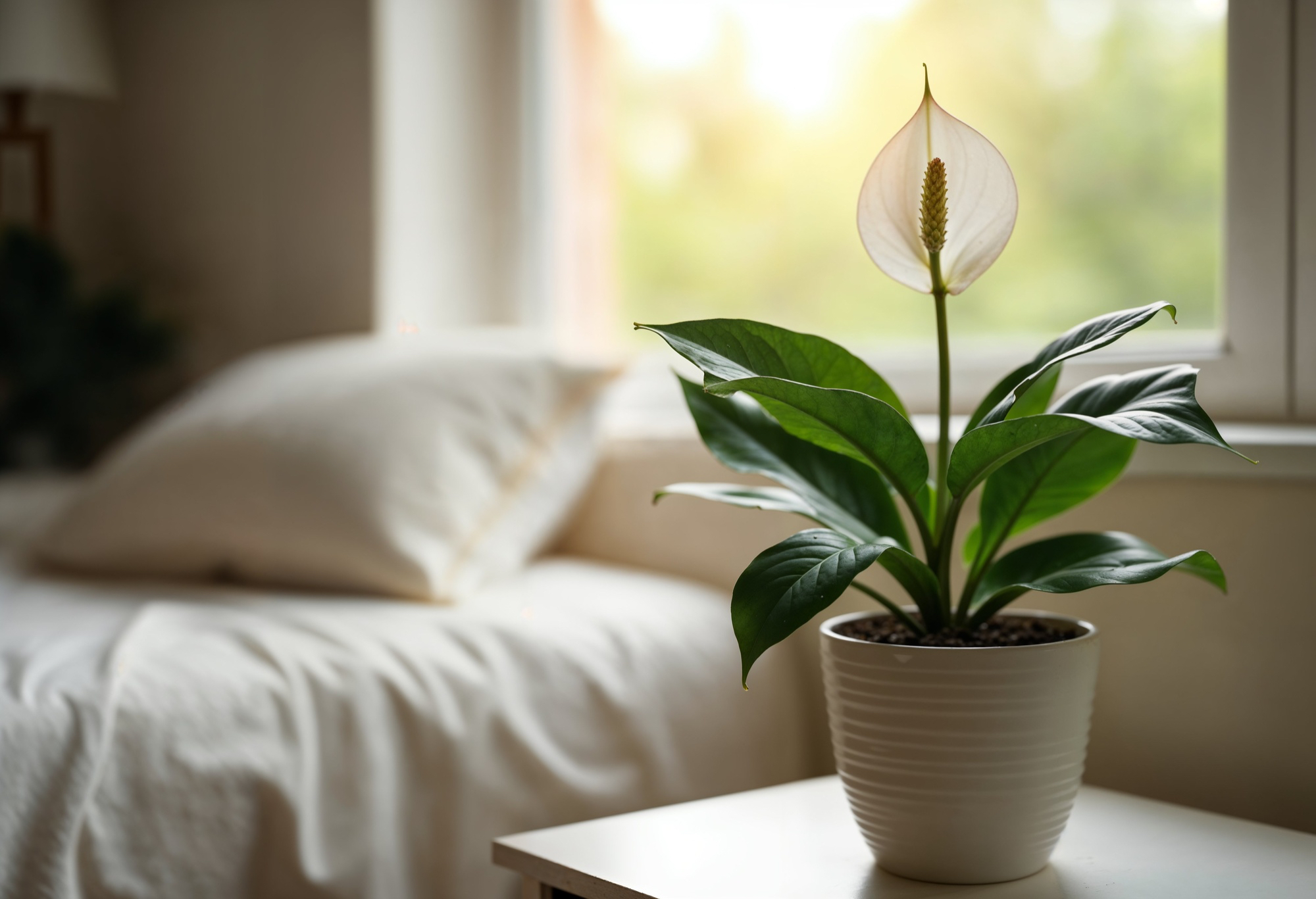
3. Creating a Tropical Oasis
If you’re aiming to create a tropical or jungle-inspired theme in your home, Peace Lilies can be combined with other lush, green plants such as ferns, philodendrons, or snake plants. Arrange the plants in various sizes and heights to create depth and interest. Adding decorative elements like woven baskets or wooden plant stands can complement the natural, earthy vibe.

4. Pairing Peace Lily with Neutral Tones
Peace Lilies naturally have a minimalist aesthetic, with their simple white flowers and dark green foliage. They pair beautifully with neutral-toned interiors. Consider placing your Peace Lily in a room with white, beige, or light gray walls to make the plant stand out. A white or black pot will enhance the modern, sleek look of the plant, creating a calm, serene environment.
5. Peace Lily in the Office
Peace Lilies are also great for the office, where they can help reduce stress and boost productivity. Their elegant look adds a touch of greenery without overwhelming the space. Keep them on a desk, shelf, or windowsill where they can get some indirect light. The Peace Lily will not only purify the air but also add a calm and stylish element to your workspace.
6. Peace Lily and Pet-Friendly Home Design
One of the best things about the Peace Lily is that it is relatively safe for most pets, especially compared to other popular houseplants. While Peace Lilies are toxic to cats and dogs if ingested, their presence does not pose a major threat when placed out of reach. If you have pets, it’s still a good idea to keep the plant in a higher spot or use a decorative plant stand to avoid any accidents.

Creating a Sustainable Design with Peace Lilies
For those interested in eco-friendly home design, Peace Lilies are an excellent choice. These plants not only improve indoor air quality by removing toxins but also contribute to creating a calming, natural environment. You can take it a step further by incorporating sustainable décor elements like recycled plant pots, eco-friendly materials, and organic fertilizers for your Peace Lily care routine.
Conclusion: Bringing Peace Lily Into Your Home
Growing a Peace Lily at home is both rewarding and simple. By placing it in the right location, providing regular care, and integrating it into your home design, you can enjoy this elegant plant for years to come. Whether you’re looking to brighten your living room, bedroom, or office, Peace Lilies are the perfect choice to elevate your home décor. So, go ahead—bring peace, beauty, and a touch of nature into your space with a Peace Lily today!
Read More:
- Peace Lily Care Guide: How to Keep Your Peace Lily Thriving – Discover how to care for your Peace Lily and help it grow healthy and vibrant.
- What is Peace Lily: A Beautiful and Beneficial Indoor Plant – Learn about the benefits and beauty of the Peace Lily as an indoor plant.
FAQ
1. Can I grow Peace Lily in low light?
Yes, Peace Lilies can thrive in low light, making them a perfect plant for spaces with indirect sunlight or areas without direct sunlight.
2. Is Peace Lily safe for pets?
While Peace Lilies are toxic to cats and dogs if ingested, they are generally safe when placed out of reach. Always keep your plants in locations that are hard for pets to access.
3. How often should I water my Peace Lily?
Water your Peace Lily when the top inch of the soil feels dry to the touch. Avoid overwatering as it can lead to root rot.
4. How can I increase humidity for my Peace Lily?
You can increase humidity by misting the plant with water, using a humidity tray, or placing a humidifier in the room.
5. How do I make my Peace Lily bloom?
Ensure your Peace Lily receives indirect sunlight, avoid over-fertilizing, and maintain consistent moisture levels to encourage blooming.
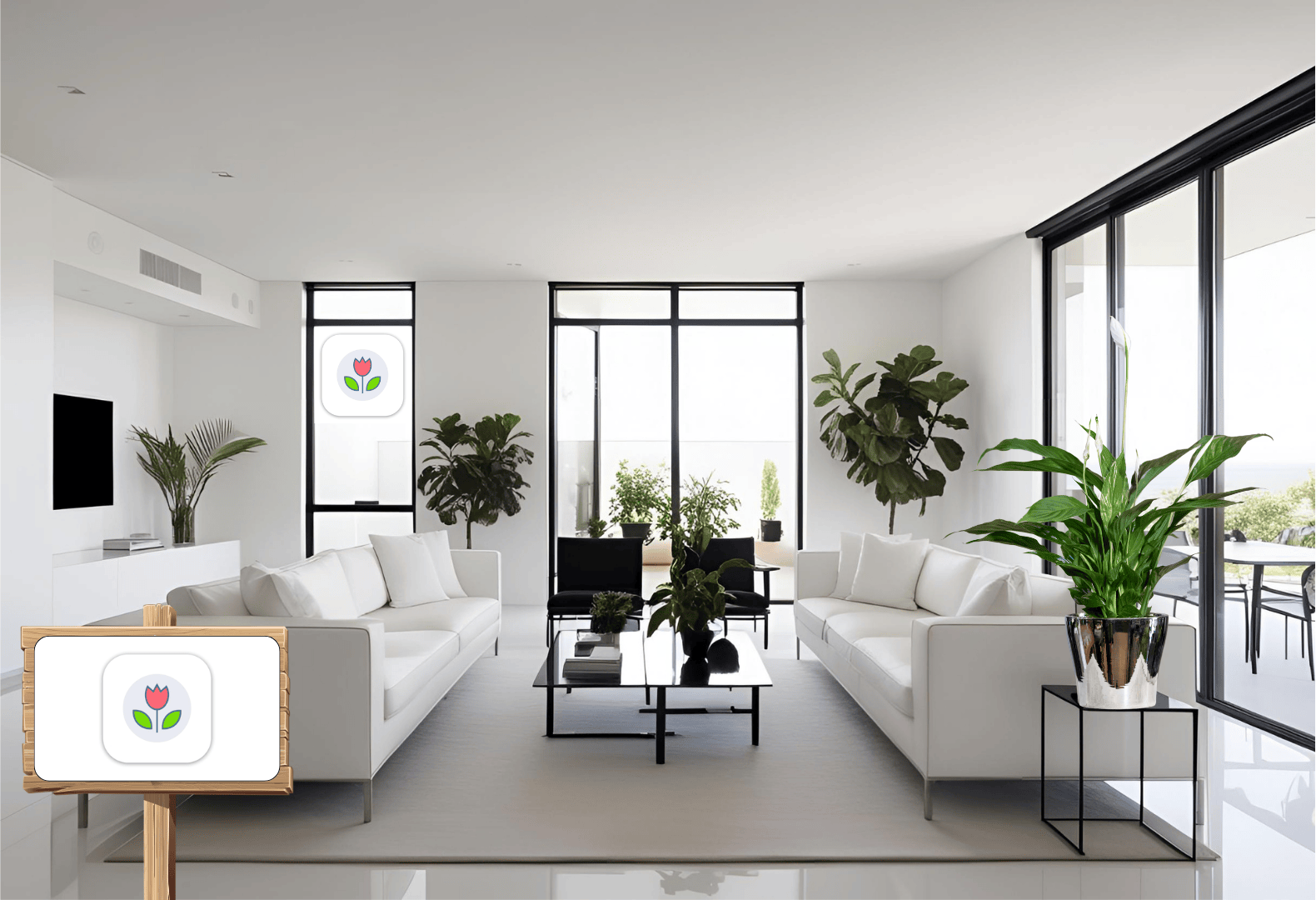
Plant Profile

Common Name

Plant Type

Mature Size

Sun Exposure

Soil Type

Soil pH

Bloom Time

Color

Hardiness Zones

Native Area

Humidity

Lighting

Temperature

Difficulty

Hibernation

Toxicity

Invasive
Peace Lily
Perenneal
12 – 40 inch
Low light
Well-drained
5.5 – 6.5
Spring, Summer
Green – White
10 – 12
Central and South America
High
Low light
18°C – 27°C
Easy
No
Mildly toxic
No

Created with Plant App

